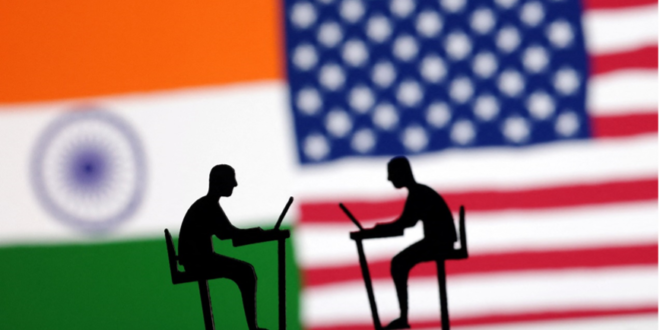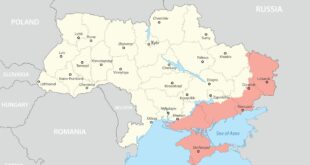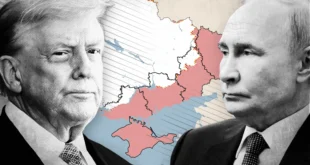Staikou Dimitra
The recent visit of an Indian government delegation to Washington on July 11 marks a pivotal chapter in the evolving economic and strategic partnership between the United States and India. At stake is not just a bilateral trade agreement (BTA), but the broader realignment of global supply chains, the recalibration of geopolitical alliances, and the emerging contours of a post-China trade landscape.
Despite ambitious efforts, the visit ended without a final agreement. Indian negotiators, seeking to conclude a BTA before July 9—when a 90-day tariff freeze expired—were unable to reconcile key differences with the U.S. side. Central to the deadlock were India’s concerns over liberalizing its agriculture and dairy sectors, and its demand for more favorable tariff treatment relative to countries like Vietnam and China.
Yet, this impasse should not be mistaken for failure. As Indian Foreign Minister Subrahmanyam Jaishankar stated on July 7 in New York, “We are in the middle—I hope more than the middle—of a very complex trade negotiation.” The tone, although cautious, reflects the political will on both sides to keep moving forward.
Strategic Timing and Political Context
This effort comes at a moment of heightened global economic anxiety, driven largely by a resurgence of protectionist rhetoric in Washington. The Biden administration, continuing many of President Trump’s hawkish trade policies, is preparing to implement sweeping tariff hikes. India, one of the few nations still actively negotiating a bilateral deal with the U.S., now finds itself at the epicenter of this new economic nationalism.
Indian Commerce Minister Piyush Goyal recently reaffirmed that any deal must align with India’s national interest—a reiteration of the “India First” doctrine that Prime Minister Narendra Modi has used to steer foreign policy. India’s objective is clear: secure better access for its goods, protect its domestic industries, and leverage the deal for strategic uplift.
A Deal With High Stakes
The urgency of the negotiations stems from the looming threat of higher U.S. tariffs on key Indian exports like auto parts, pharmaceuticals, textiles, and agricultural goods. Some projections suggest Indian products could face duties as high as 27%, up from the current average of around 10%.
But there is also opportunity in this moment. A breakthrough could shield India from the worst of these tariff hikes and unlock a range of economic and strategic benefits. According to analysts at Arihant Capital Markets, Washington is likely to impose comparatively lower tariffs on Indian products if a deal is reached. Treasury Secretary Scott Bessent noted that the U.S. is “very close with India,” suggesting that negotiators see India as a preferred trade partner amid shifting alliances.
Why This Deal Matters
First and foremost, a trade agreement would accelerate the decoupling from China that both Washington and New Delhi are quietly pursuing. India’s “China+1” strategy aims to attract manufacturing away from China by offering an alternative base for global companies. In parallel, the U.S. wants to diversify its supply chains and reduce strategic dependencies on Beijing—objectives that neatly align with Indian ambitions.
Second, Indian exports such as pharmaceuticals, software, textiles, and engineering goods would benefit from reduced tariffs and simplified U.S. regulations. This would particularly support India’s SME sector, which is hungry for global markets. The agreement could also attract significant U.S. investment into India’s manufacturing and digital infrastructure, deepening bilateral economic interdependence.
Third, the deal carries geopolitical weight. Enhanced trade ties would reinforce the India-U.S. strategic partnership, particularly within frameworks like the Quad (which includes Japan and Australia). As Washington rebalances its focus toward the Indo-Pacific, a robust economic relationship with India will act as a counterweight to both Chinese and Russian influence in the region.
Human-Centric Globalization
One often-overlooked dimension is how India, if it plays its cards right, could present a human-centered alternative to China’s industrial dominance. Chinese companies such as Shein, which have come under fire for environmental degradation and exploitative labor practices, represent the darker side of globalization. In contrast, Indian companies like FabIndia—known for sustainable sourcing, fair wages, and ethical production—could emerge as a new face of responsible commerce.
An India-U.S. trade agreement could accelerate this shift, especially in sectors like textiles, crafts, and eco-conscious consumer goods. With the right policy framework and market access, India can become not just the “world’s back office,” but a leader in ethical manufacturing and sustainable trade.
Obstacles Remain
However, challenges remain. India’s reluctance to open sensitive sectors like agriculture and dairy reflects the domestic political economy, where millions of small farmers are vulnerable to international competition. On the U.S. side, regulatory barriers and domestic lobbying groups—particularly in the pharmaceutical and dairy sectors—complicate the path forward.
Moreover, the broader international environment is turbulent. With the upcoming U.S. presidential elections and the continuing trade war rhetoric, political volatility in Washington could derail even well-advanced negotiations.
The Path Forward
Despite these uncertainties, the strategic logic for a deal remains compelling. India offers scale, stability, and a growing consumer base. The U.S. offers market access, capital, and advanced technology. Together, the two democracies can chart a course that is economically beneficial and geopolitically stabilizing.
Indian officials have indicated that the first tranche of the trade deal could still be finalized by autumn. If successful, it will send a powerful signal: that even in an era of deglobalization and populist retrenchment, mature democracies can forge agreements that prioritize mutual benefit, sustainability, and long-term strategic alignment.
As Prime Minister Modi likes to say, India does not just participate in global systems—it helps shape them. A comprehensive trade agreement with the United States would affirm that vision and secure India’s place in the next phase of the global economic order.
Dimitra Staikou is a Greek lawyer, human rights advocate . She works as a journalist writing about human right’s violations in South Asia and ctravels to India to get informed about the political situation there and the geopolitcs between India,China ,Pakistan and Bangladesh. She works for Greece’s biggest newspaper Skai.gr and Huffpost.Gr as well as international distinguised news sites as Modern Diplomacy and Global Research.
 Geostrategic Media Political Commentary, Analysis, Security, Defense
Geostrategic Media Political Commentary, Analysis, Security, Defense





